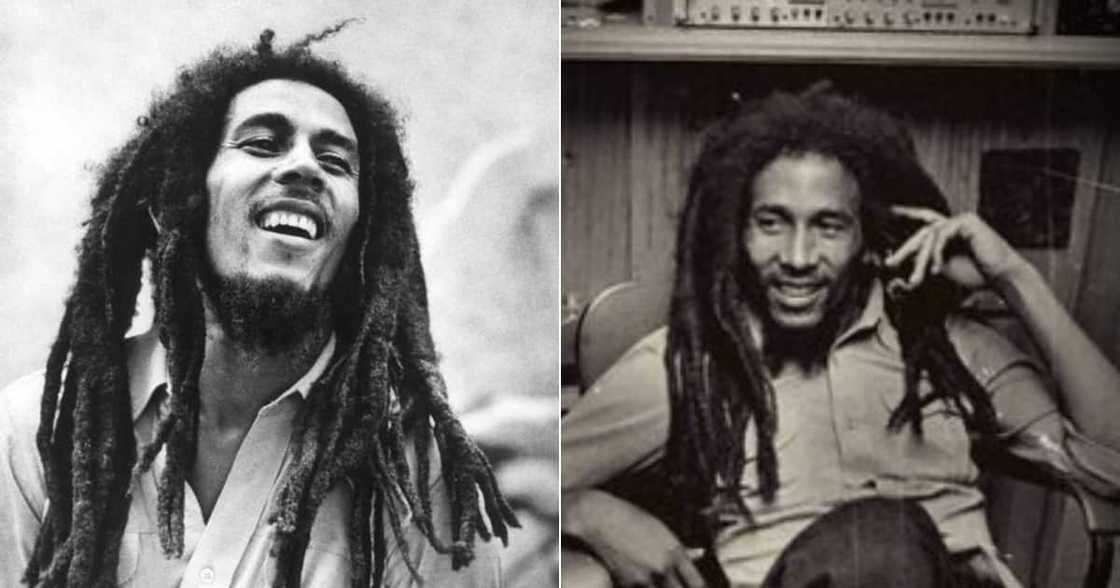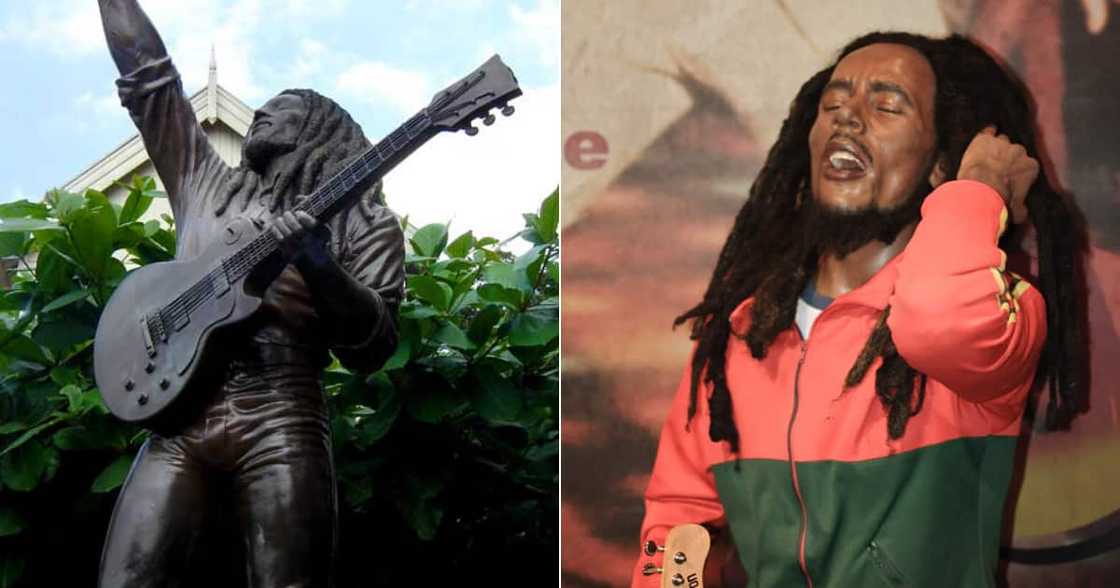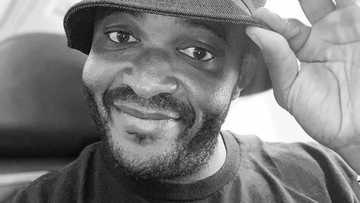Buffalo Soldier: A Look at the Life and Times of Late Great Bob Marley
Robert Nesta Marley, more popularly known as Bob Marley, passed away on this day, 11 May 1891. The Jamaican singer, songwriter and musician would have been 76.
Briefly News takes a look at the celebrated life of the reggae pioneer to commemorate the day he left the world.
PAY ATTENTION: Click “See First” under the “Following” tab to see Briefly.co.za News on your News Feed!
1. Early life
Bob Marley was born on 6 February, 1945 in Jamaica, to Norval Sinclair Marley and Cedella Malcolm.
Norval Marley was a white Jamaican from Clarendon Parish, Jamaica. Norval claimed to have been a captain in the Royal Marines at the time of his marriage to Cedella Malcolm, an Afro-Jamaican.

Source: Depositphotos
Although Marley’s father financially supported his mother, he hardly ever saw his son.
2. Schooling
Bob Marley attended Stepney Primary and Junior High School. When Bob Marley was 10 years old, his father died of a heart attack at the age of 70.

Read also
Russell Bufalino: Lifestory of one of the most powerful mob boss from Bufalino crime family
Marley's mother went on later to marry Edward Booker, a civil servant from the United States, giving Marley two half-brothers: Richard and Anthony. Bob’s interest in music developed while at Stepney Primary and Junior High School.
3. Early career
Marley moved to a place called Trenchtown, Kingston when he was 12 years old.
Bob Marley and Neville Livingston (later known as Bunny Wailer) had been childhood friends. Marley and Livingston began exploring different types of music. The move to Trenchtown led to Marley starting a vocal group with Bunny Wailer, Peter Tosh, Beverley Kelso and Junior Braithwaite. It was at this time that Marley started learning how to play the guitar.
1962–1972
In February 1962, Marley recorded four songs at Federal Studios for local music producer Leslie Kong.
A year later, Bob Marley, Bunny Wailer, Peter Tosh, Junior Braithwaite, Beverley Kelso, and Cherry Smith were called the Teenagers before changing to Wailing Rudeboys, then settling on the Wailing Wailers.
By 1966, Braithwaite, Kelso, and Smith had left the Wailers, leaving the core trio.
Though raised as a Catholic, Marley became interested in Rastafari beliefs in the 1960s. Marley formally converted to Rastafari and began to grow dreadlocks.
1972–1974
In 1972, Bob Marley signed with CBS Records in London and went on a UK tour with soul singer Johnny Nash.
While in London the Wailers asked their road manager Brent Clarke to introduce them to Chris Blackwell, who had licensed some of their Coxsone releases for his Island Records.
The Wailers returned to Jamaica to record at Harry J's in Kingston, which resulted in the album Catch a Fire.
The Wailers' first album for Island, Catch a Fire, was released worldwide in April 1973. It initially sold 14,000 units and received a positive critical reception.
The Wailers were scheduled to open 17 shows in the US for Sly and the Family Stone. After four shows, the band was fired because they were more popular than the acts they were opening for. The Wailers disbanded in 1974, with each of the three main members pursuing a solo career.
1974–1976
Despite the break-up, Marley continued recording as "Bob Marley & The Wailers". In 1975, Marley had his international breakthrough with his first hit outside Jamaica, with a live version of No Woman, No Cry, from the Live! album.
This was followed by his breakthrough album in the United States, Rastaman Vibration (1976), which reached the Top 50 of the Billboard Soul Charts.
1976–1979
Marley left Jamaica at the end of 1976.
Whilst in England, he recorded the albums Exodus and Kaya. Exodus stayed on the British album charts for 56 consecutive weeks. During his time in London, he was arrested for the possession of marijuana.

Source: Depositphotos
In 1978, Marley returned to Jamaica and performed at another political concert, the One Love Peace Concert, again in an effort to calm warring parties.
Under the name Bob Marley and the Wailers 11 albums were released, four live albums and seven studio albums.
1979–1981
Survival was released in 1979. Tracks on the album reflected Marley's support for the struggles of Africa.
His appearance at the Amandla Festival in Boston in July 1979 showed his strong opposition to South African apartheid. In early 1980, he was invited to perform at 17 April celebration of Zimbabwe's Independence Day.
Uprising (1980) was Bob Marley's final studio album, and is one of his most religious productions.
4. Death
In July 1977, Marley was found to have a type of malignant melanoma under the nail of a toe.
Unlike other melanomas, usually on skin exposed to the sun, Marley’s acral lentiginous melanoma occurred in a place that was easy to miss.
Marley turned down his doctors' advice to have his toe amputated, citing his religious beliefs.
When he eventually collapsed while jogging, he was taken to hospital, where it was found that his cancer had spread to his brain, lungs, and liver.

Source: Getty Images
After eight months of failing to treat his advancing cancer, Marley boarded a plane and his condition worsened. After landing in Miami, Florida, he was taken to Cedars of Lebanon Hospital for medical attention, where he died on 11 May 1981, aged 36.
His final words to his son Ziggy were "Money can't buy life."
Briefly News previously reported that the only surviving founding member of the reggae band The Wailers, Bunny Wailer, breathed his last.
The celebrated reggae legend was pronounced dead on the morning of Tuesday, March 2, according reports from the Caribbean island.
The Jamaican Observer, which broke the news of Wailer's demise, confirmed the Boderation hitmaker died while receiving treatment at the Medical Associates Hospital in Kingston.
He died aged 73.
Enjoyed reading our story? Download BRIEFLY's news app on Google Play now and stay up-to-date with major South African news!
Source: Briefly News





